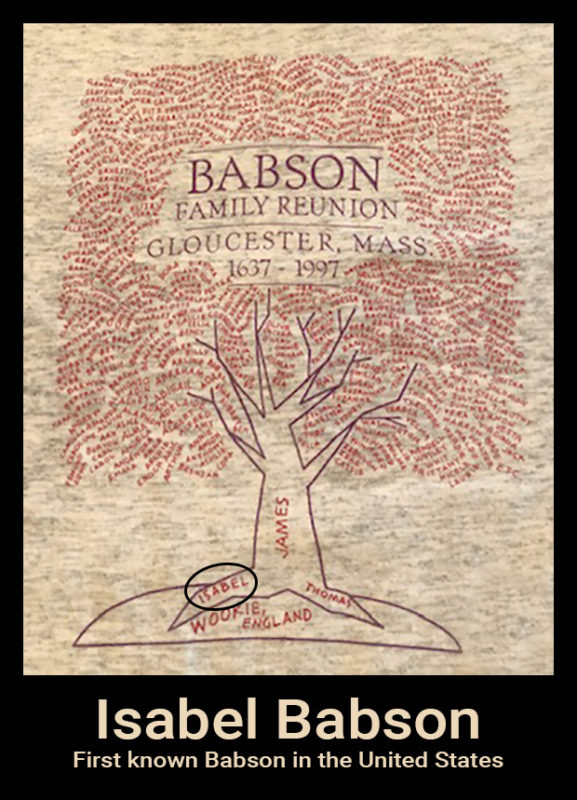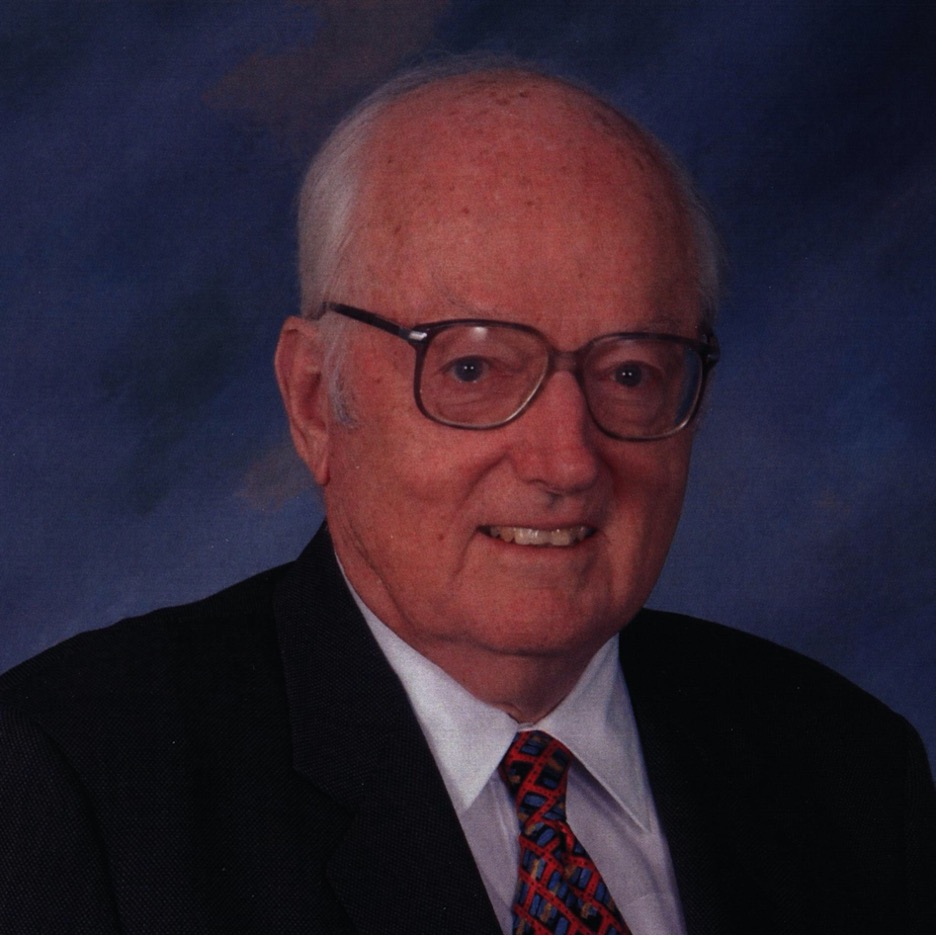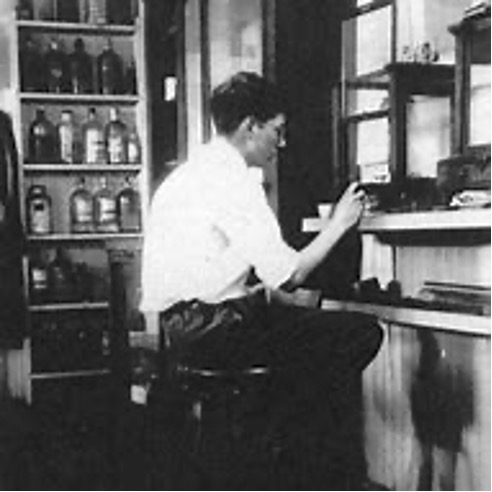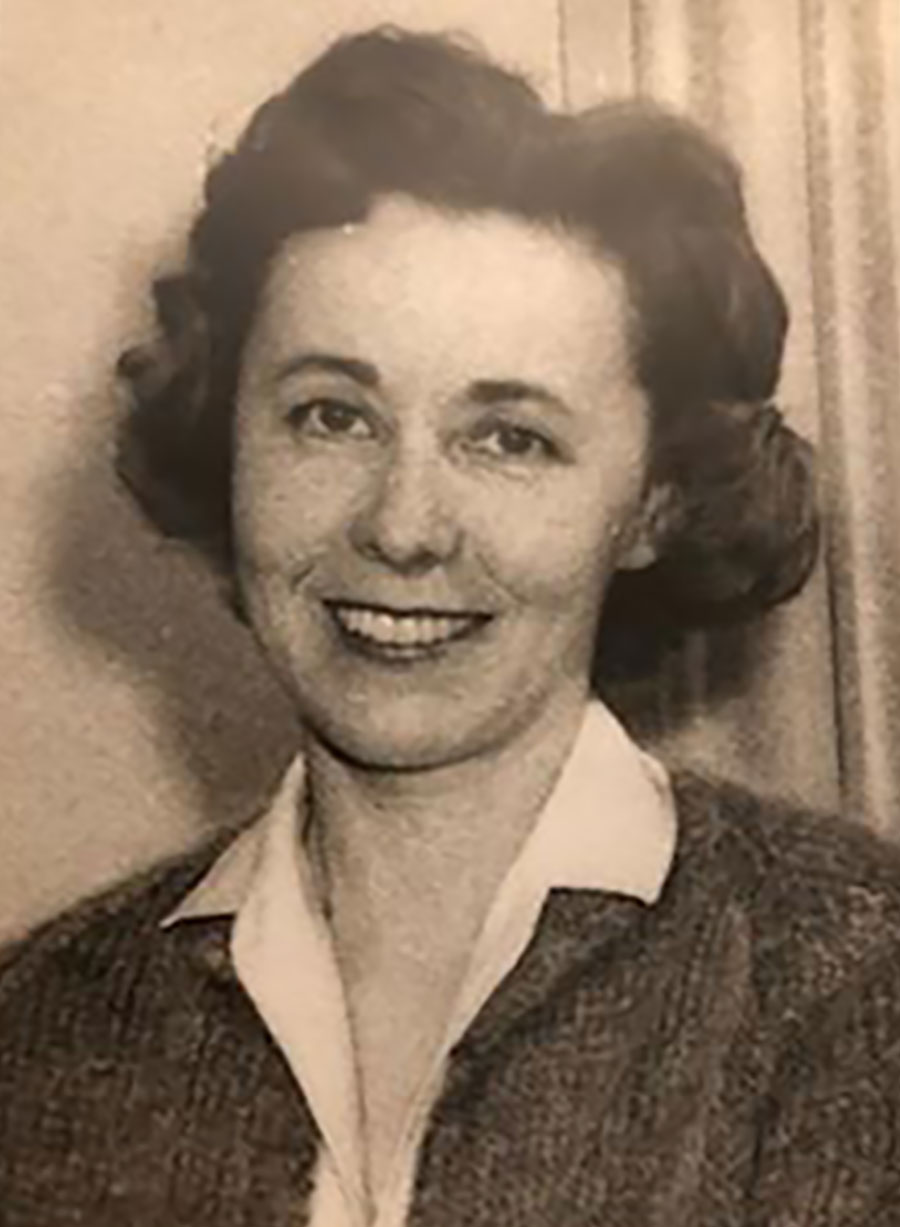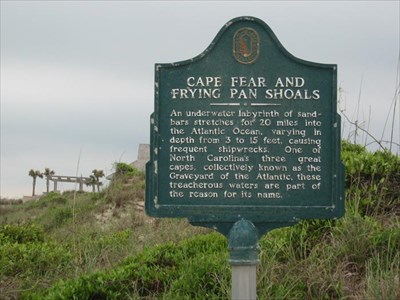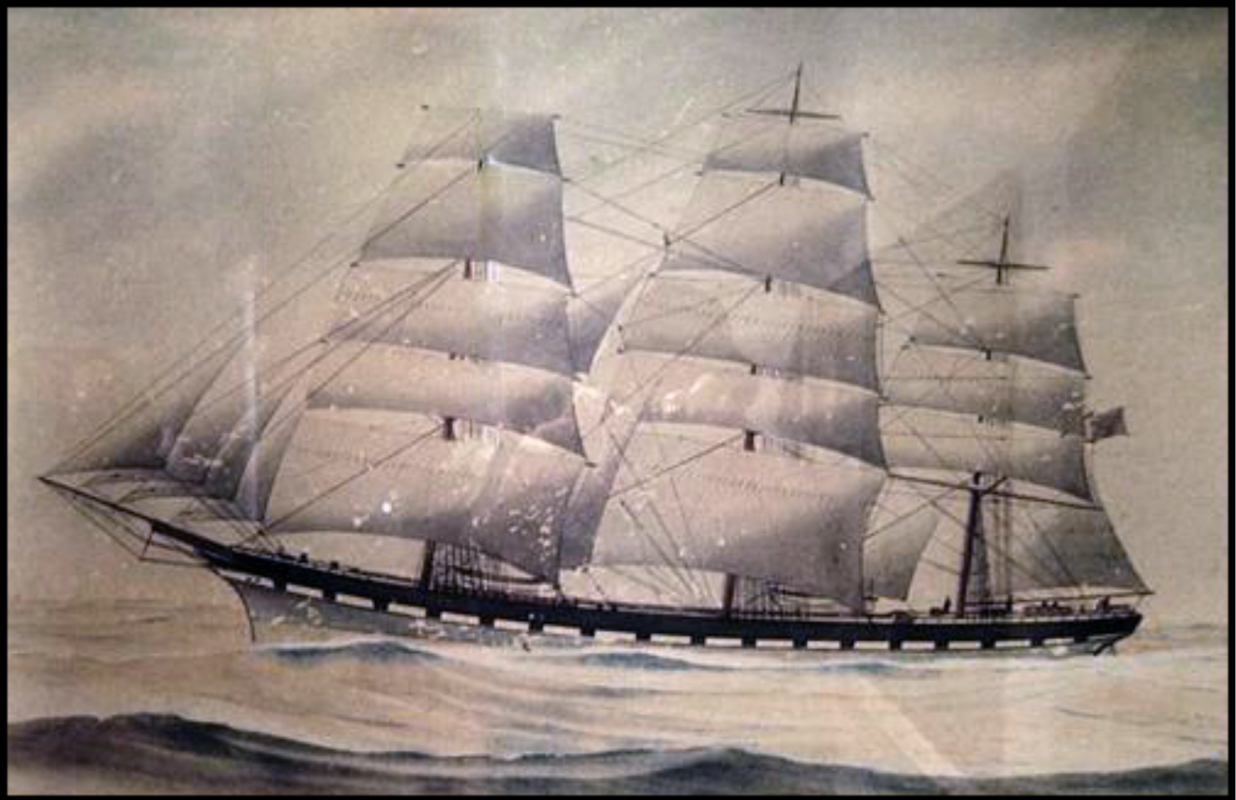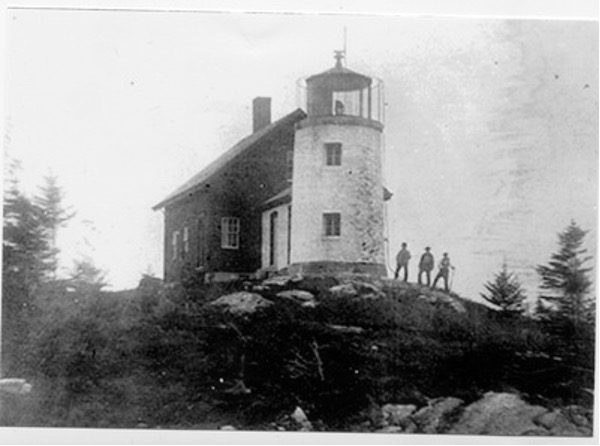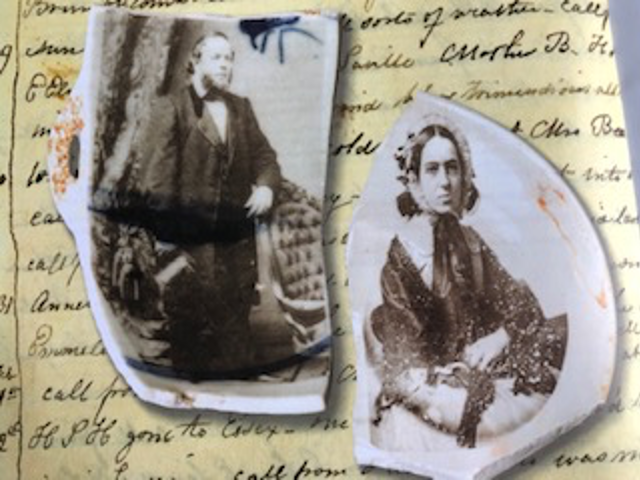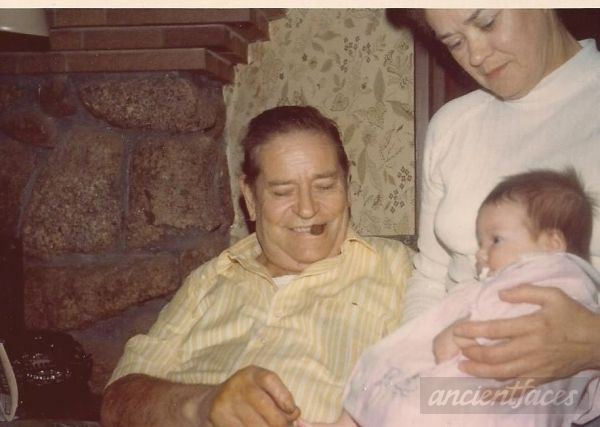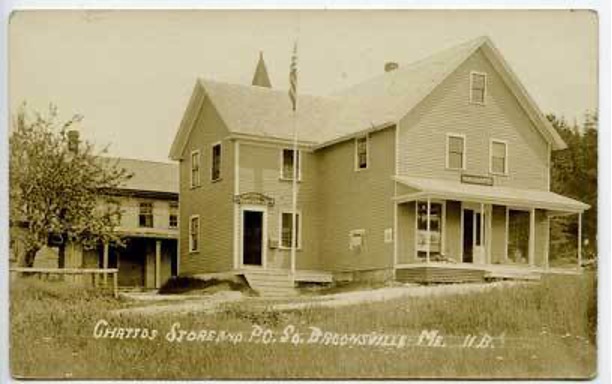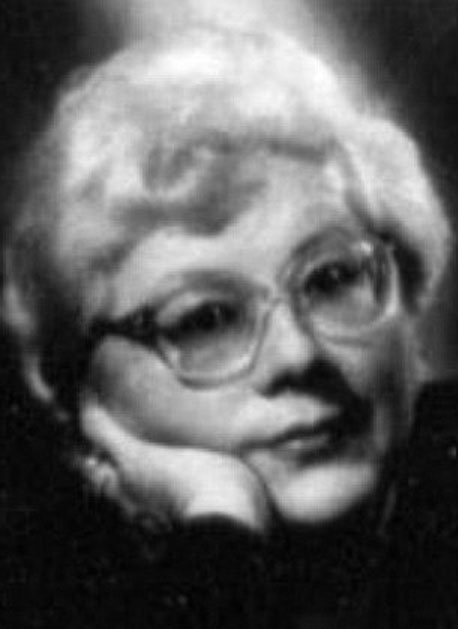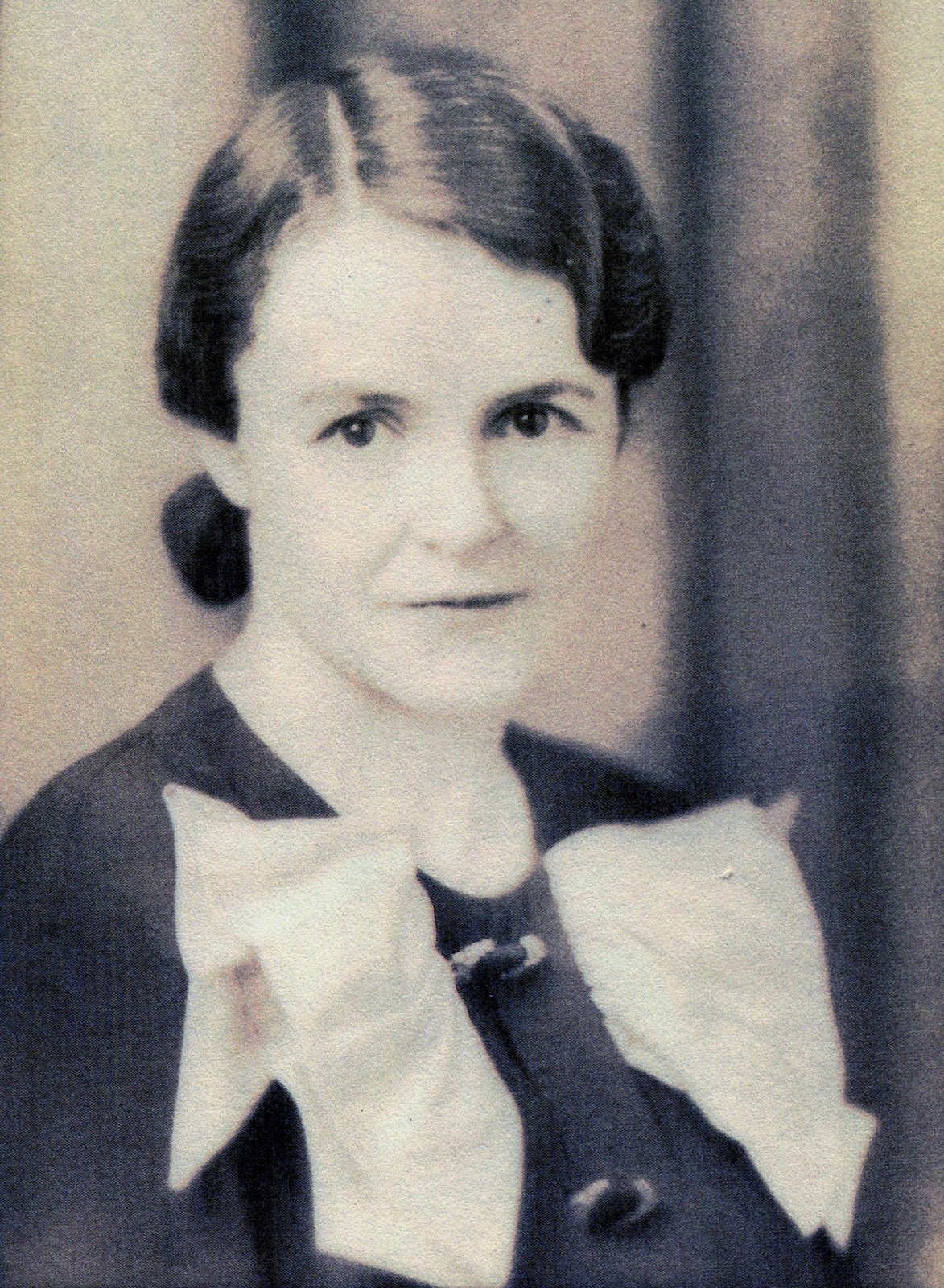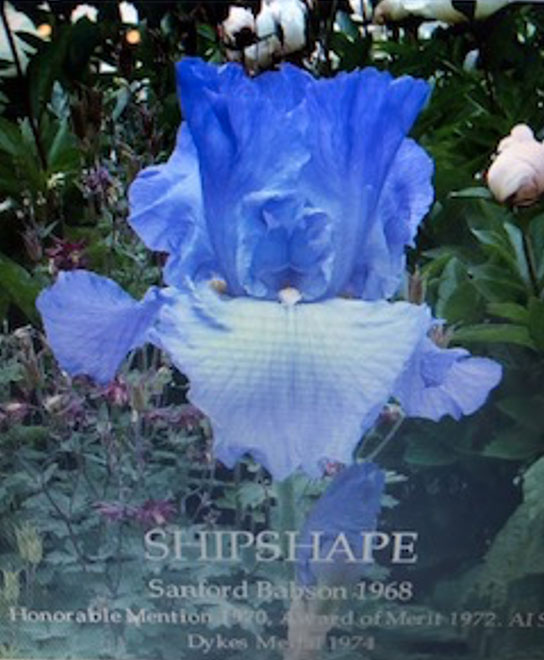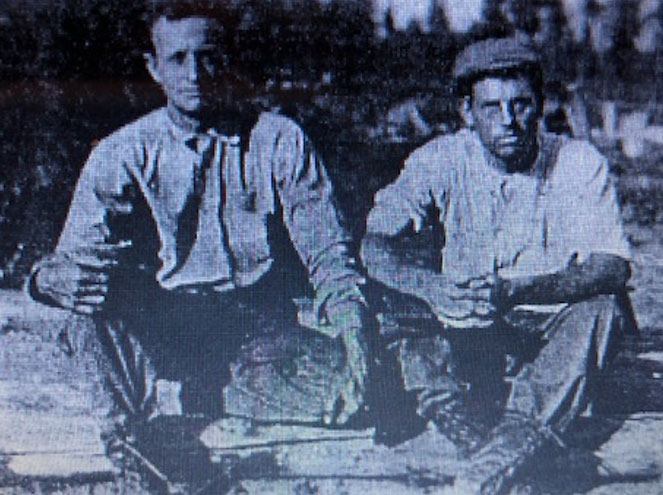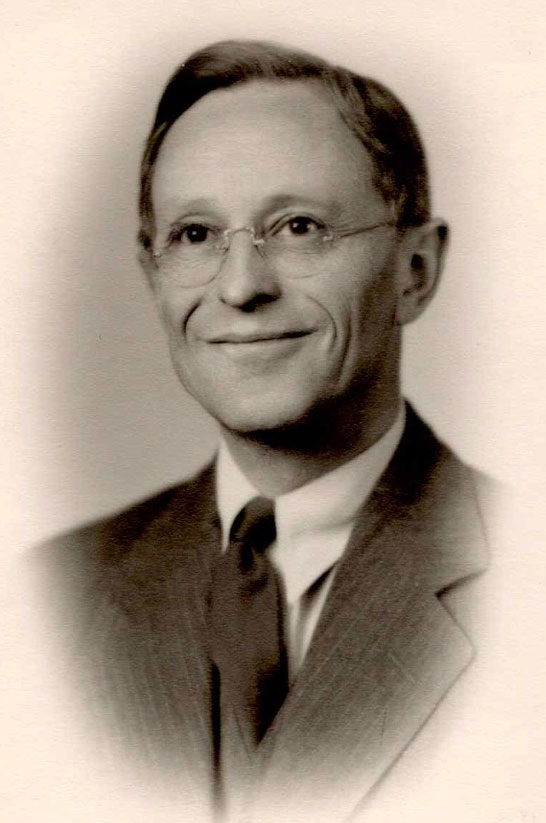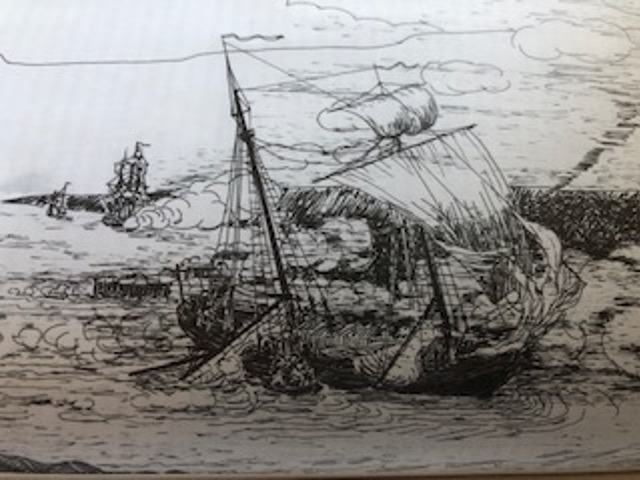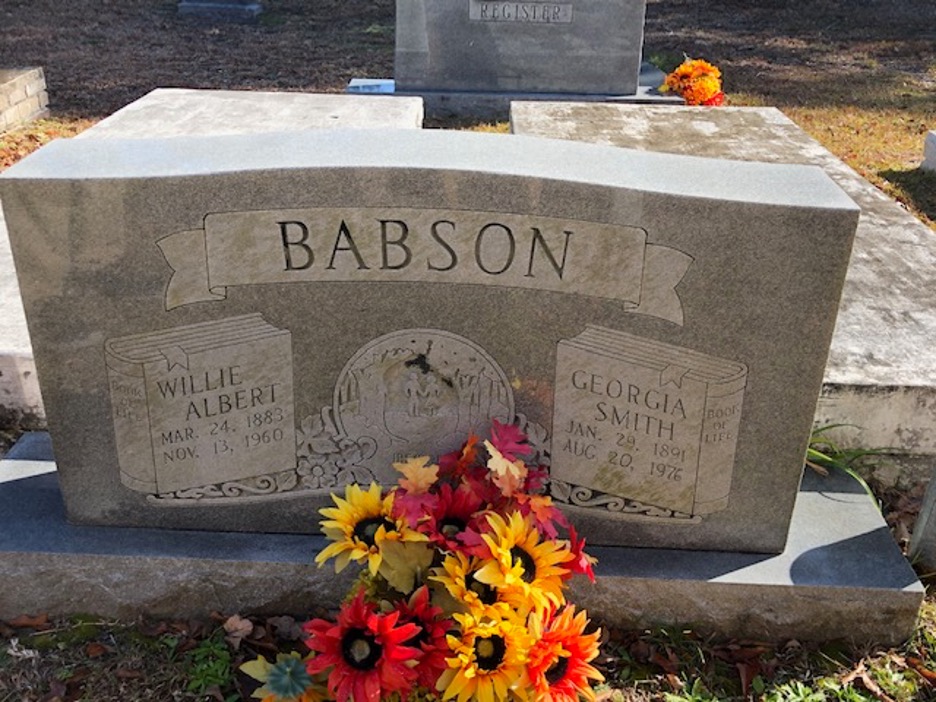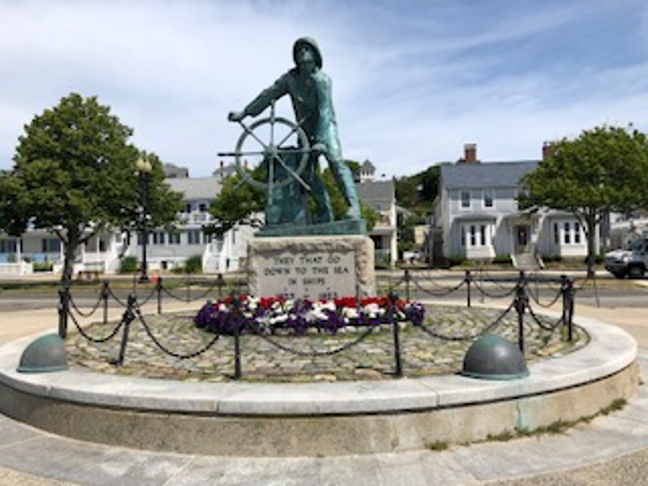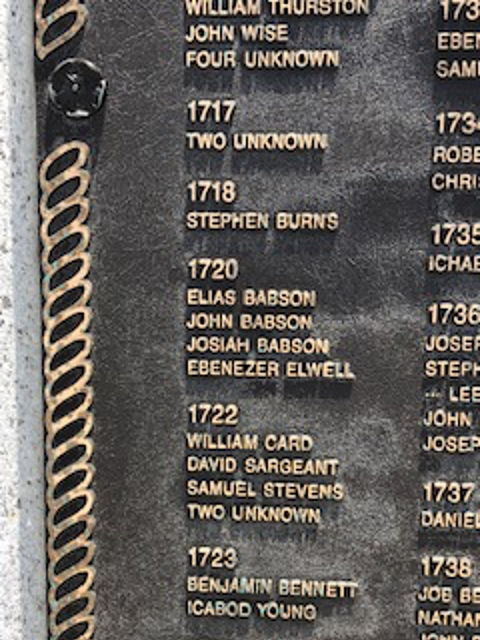By Katherine L. Babson, Jr., Trustee
Babsons have fought in wars in America since the end of the seventeenth century until current times. They have fought in King Philip’s War, the American Revolutionary War, the War of 1812, the Civil War (with Babsons fighting for the North and other Babsons, for the South), World Wars I and II, the Korean War, the Vietnam War, and the current conflagrations. They have fought in the infantry and the calvary and on the sea, both in the Navy and as privateers.
This section will be expanded as time goes on. For now, it covers the Babsons who fought in King Philip’s War, the American Revolutionary War, the War of 1812, the Civil War, World War I, Korean War and the Vietnam War.
NOTE: The reference to generation and number are keyed to The Babson Genealogy 1606-2017, Descendants of Thomas and Isabel Babson by Alicia Crane Williams, FASG.
KING PHILIP’S WAR
(1675-1676 in Southern New England)
King Philip’s War, also known as the First Indian War, the Great Narragansett War or Metacom’s Rebellion, took place in southern New England from 1675 to 1676. It was the Native Americans’ last-ditch effort to avoid recognizing English authority and stop English settlement on their native lands. It left several hundred colonists dead and dozens of English settlements destroyed or heavily damaged. Thousands of Indians were killed, wounded or captured and sold into slavery or indentured servitude. The war mostly ended Indian resistance in southern New England, paving the way for additional English settlements.
There was only one Babson who fought in this war:
THOMAS BABSON (third generation #6) born in Gloucester, Massachusetts, in 1658 and was lost at sea between 1677/8 and 1679. During King Philip’s War, he served as a soldier in the Massachusetts Militia led by Capt. William Turner’s Company at Hadley, Massachusetts and Hampton, New Hampshire. Rights to the land granted to Thomas in Kettle Cove on Cape Ann for his service in the war was given to his brother, John, in 1696/97.
AMERICAN REVOLUTIONARY WAR
(1776-1783)
There were six Babsons who fought in the American Revolutionary War, two of whom died in the conflict, and another who died from wounds afflicted on him. They, and other Babsons, also played significant roles as Privateers, which is a section “in progress”.
WILLIAM BABSON (1721-1775) (fifth generation #19) was born in Gloucester and was the son of John and Hannah (Hodgkins) Babson. He was apparently the unfortunate soul who led the Royal Navy Captain into Gloucester Harbor soon after the declaration of war with England in the American Revolutionary War. William’s death in 1775 was “occasioned or hastened” by the Battle of Gloucester. He and his wife had 6 children. He was 54.
See more on William and the Battle of Gloucester.
ISAAC BABSON (1759-1800) (sixth generation #22), born in Wenham, Massachusetts, was the first Babson to graduate from Harvard College, Class of 1779. While he was still a student, Isaac enlisted in Capt. George Minot’s company of Col. Eleazer Brooks’ regiment and served from March 4-9, 1776 during the occupation of Dorchester Heights, Massachusetts. With cannon procured by Benedict Arnold and Ethan Allen and his Green Mountain boys in the battle of Fort Ticonderoga the previous spring, the victory at Dorchester Heights led to the evacuation of the British from Boston on March 17, 1776 (now locally celebrated as “Evacuation Day”). After graduation, Isaac became a steward on the privateer ship, Buccaneer. At his death in 1800, he left a wife and four children.,
CAPTAIN SAMUEL BABSON (1740/1-1805) (sixth generation #26), born in Gloucester, was one of 16 men from Gloucester to serve in the war. Capt. Samuel served as a mariner on the ship Vengeance as part of the 44-ship naval armada on the expedition to Penobscot in August 1779. The Expedition’s goal was to reclaim control of mid-coast Maine from the British who had captured it a month earlier, naming it New Ireland. It was the largest American naval expedition of the war and the United States’ worst naval defeat until Pearl Harbor in 1941.
In 1780-81, Capt. Samuel commanded two privateers, the brig Ranger, and the brig Ruby, both with crews of 20 men. After the war, he owned two schooners, one of which, Sally, was captured by the French in 1797. His descendants filed claims under French Spoliation law. More than 100 years later, in 1907, Congress made an award for the claimed losses.
Capt. Samuel died in 1805 at age 65. He and his wife had 5 children.
JOHN BABSON 3rd (1746/47-about 1791) (sixth generation #27), probably served as matross (i.e., gunner’s mate) in Capt. William Ellery’s 1st company in Gloucester in 1776. He joined his brother, Capt. Samuel above, on the brig, Vengeance, in the disastrous Penobscot expedition in 1779 to rid the Maine coast of the British. It is presumed he was lost at sea in 1791 at about age 54. He had married and had one son.
NATHANIEL STEVENS BABSON (1749-died after 1775) (sixth generation #28), like his brothers, Capt. Samuel and John (above), Nathaniel served in the Revolutionary War. In May 1775, he enlisted in Capt. Ezra Lunt’s Company of Col. Moses Little’s Regiment. He served at the Battle of Bunker Hill in June 1775, a failed attempt to end the British siege of Boston.
Nathaniel re-enlisted in Capt. Samuel Ward’s Company for Benedict Arnold’s expedition to Quebec with the intention of capturing Quebec City from the British. The Continental Army troops arrived, exhausted and hungry, and began a siege of the City in December 1775. They finally launched an assault on December 31. It was a devastating loss and Nathaniel was one of 350 men who were captured. No further record exists for him. He was about age 26 at that time.
ABRAHAM BABSON (1761-1839) (sixth generation #37) was born in Gloucester and moved with his family to Babson’s Ridge in Sedgwick, now Brooklin, Maine, in 1773. They were the first of many Babsons who ultimately lived in the area.
Abraham enlisted in 1779 and served as a private in Capt. Nathaniel Fales’ Company. The Company was under the command of General Solomon Lovell who led the land forces of the failed Penobscot Expedition to dislodge the British from the mid-Maine coast around Castine.
Abraham and his wife had 14 children, only one of whom died in infancy. He died at age 78.
WAR OF 1812
(June 1812-February 1815)
The War of 1812 was a conflict fought between the United States and Great Britain over British violations of U.S. maritime rights. It was ended with the Treaty of Ghent that restored pre-War boundaries. Britain recognized international immunity for US citizens and provided freedom of the seas for US merchant ships. Although there are only five Babsons who fought in this war, other Babsons played significant roles as privateers.
NOTE: The reference to generation and number are keyed to The Babson Genealogy 1606-2017, Descendants of Thomas and Isabel Babson by Alicia Crane Williams, FASG.
JOHN BABSON (1781-1825) (seventh generation #45) was born in Gloucester. He and his wife moved to Wiscasset, Maine, where he was the editor of the local paper, a merchant and ship owner. He served as a private in Capt. H. Whitney’s Company of Lt. Col. E. Cutter’s Regiment at Wiscasset for two short periods from June 20 to 24 and September 10 to 28, 1814. The British had succeeded in obtaining control of the mid-Maine coast. John joined others from Wiscasset and saw service there.
John died in 1825 at age 44. He and his wife, Abigail Hughes (Hues) Babson, had 12 children, 5 of whom died in infancy and the twelfth child of whom was born posthumously.
JAMES BABSON (1795-1844) (seventh generation #48), brother of John Babson (above), was born in Gloucester.
He is probably the James who served as a private in Capt. Dudley Sargent’s Company in Lt. Col. John Appleton’s Regiment in the Massachusetts Militia. He may have given service in Gloucester on September 19, 1814 “at the battle with the barges of the enemy”.
James died in Amesbury, Massachusetts, in 1844 at age 49. He was survived by his wife and their four children.
JOHN BABSON (1786-c.1825) (seventh generation #51) was born in Gloucester. He probably was the “John Babson” who served in Capt. A Potter’s Company in Lt. Col. E. Cutter’s Regiment from July 12-13, 1814 at Wiscasset, Maine. He died around 1825, at age 39, probably leaving a wife and a son who was born after the war.
EBEN BABSON (1792-1841) (seventh generation #52), brother of John (#51), was born in Gloucester and moved with his family to Maine in 1798. He served in Capt. J.O. Hotchkiss’ Company in the Massachusetts Militia. He received a pension.
Eben was the 8th of the 11 children of Capt. John (#31) and Susannah (Rogers) Babson. Capt. John was a privateer in both the American Revolutionary War and in the War of 1812. Capt. John moved his family to Somesville, the earliest European settlement on Mount Desert Island, Maine.
Eben died in Somesville, survived by his wife and 5 children, all of whom were born after the war.
JOSEPH BABSON (1794-1881) (seventh generation #64) was born and died at Babson’s Ridge in Sedgwick on Penobscot Bay, Maine. He served as a member of Phineas Emerson’s Company in Col. Andrew Grant’s Battalion of the Massachusetts Militia.
Joseph saw action at the Battle of Hampden on September 3, 1814. It was a British victory, Hampden was sacked and many prisoners were taken. It was the last serious battle on land in Maine and represented the end of two centuries of conflict over the sovereignty of district of Maine. Britain removed its expeditionary force from its base in nearby Castine, thus ensuring that eastern Maine would remain a part of the United States, whose boundary was settled by the Treaty of Ghent. The lack of support by Massachusetts was a factor in the subsequent movement for Maine statehood.
Joseph married Emma (Freethy) after the war. She and their four children survived him.
AMERICAN CIVIL WAR
(1861-1865)
Babsons fought for both sides in the Civil War. There are records of 16 Babsons who fought for the Union and 5 for the Confederacy. Father/sons/brothers/cousins enlisted together and cousins found themselves on opposite sides of the War. Of the 21 Babsons who saw service, 6 died, 5 were wounded and 3 were taken as prisoners of war.
NOTE: The reference to generation and number are keyed to The Babson Genealogy 1606-2017, Descendants of Thomas and Isabel Babson by Alicia Crane Williams, FASG.
FOR THE NORTH / Union
SIMEON ELLIS ALLEN (1843-1864) (eighth generation #38iv.6) was born in Sedgwick (now Brooklin, Maine), one of eight children of Louisa Babson and her husband, Simeon Allen, a state representative. Simeon died in the Army on July 31, 1864. Presumably he had enlisted in the Maine Infantry and may have participated in the Richmond-Petersburg Virginia campaign—often known as the Siege of Petersburg, a series of battles around Petersburg from June 15, 1864-April 2, 1865.
EDWIN BABSON (1831-1879) (eighth generation #87) was born in West Newbury, Massachusetts. He served in the U.S. Navy in the eastern and western Gulf, first aboard the Sagamore and later, on the R.R. Cuyler. He was appointed acting master’s mate on November 11, 1861, then in June 1862 named as acting master until his discharge on November 1, 1865. Both vessels were wooden screw steamers, steam ships that were powered by steam engines. The Union Navy played an important role in winning the Civil War with its blockade of 3,500 miles of Confederate coastline. When Edwin joined the U.S. Navy in 1861, he was one of only 9,000 seamen and when he was discharged 4 years later, there were about 59,000 sailors.
Edwin married before the war and had two children born before the war, and two after the war. Edwin was the captain of a full-rigged barque, the Lizzie, which made voyages to the Orient and around the Cape of Good Hope. On a trip to Calcutta in 1879, with his wife and two of their children, Edwin died and was buried in Cardiff, Wales.
WASHINGTON BABSON (1824-1896) (eighth generation #97) was born in Portland, Maine. President Lincoln’s first call for volunteers for the Union Army was in April 1861 and it required the State of Maine to raise one regiment of infantry for three months of Federal service. Washington enlisted in Company D, 1st Regiment, Maine Volunteer Infantry on April 27, 1861. The regiment of 779 soldiers was transferred to Washington, D.C. where it encamped on Meridian Hill, a strategic location overlooking the capital. The regiment saw no combat.
Although the required federal service was three months, all of the soldiers, including Washington, had enlisted for 2 or 3 years. At the end of the three months, he joined Company E, 25th Regiment, Maine Infantry in September 1862 for 9 months of Federal service. This Regiment served garrison duty in the defense of the capital. He was mustered out with an honorable discharge in Portland on July 10, 1863 due to “nervous and physical prostration and heart disease”.
Washington was married and had three children before the war, two of whom died in infancy. He divorced after the war and remarried. He was admitted to the National Home for Disabled Volunteer Veterans in Milwaukee in 1887 at the age of 63. He was widowed by that time.
Lt. JOSEPH B. BABSON (1839-1915) (eighth generation #117) was born in Sedgwick (now Brooklin), Maine. He enlisted on October 22, 1861 in Company H, 4th Regiment, Maine Volunteer Infantry for three years. He was promoted to corporal on March 1, 1862 and was detailed as Division Provost Guard from March 7 to April 24, 1862. His regiment participated in all the important battles in the Army of the Potomac (e.g., Battles of Gettysburg, the Wilderness, Spotsylvania Courthouse). The regiment was involved in Malvern Hill, the last of the Seven Days Battles that took place outside of Richmond, Virginia, the Confederate capital in July 1962. It is assumed Lt. Joseph was wounded there because he was in a hospital at Harrison’s Landing and Point Lookout, Maryland in August 1862. He was promoted to first sergeant and then suffered a gunshot wound to the thigh on November 27, 1863.
He was in MacDougall Army Hospital in Fort Schuyler, New York in July 1864 at the end of his three years of Federal service at which time he was transferred to the Army Hospital in Augusta, Maine. Lt. Joseph was declared “fit for duty” on October 29, 1864 at a camp near Petersburg, Virginia. He mustered in again and the Veteran Volunteers were transferred to Company F, 19th Regiment, Maine Infantry. He no doubt participated in the Richmond-Petersburg Virginia campaign—often known as the Siege of Petersburg, a series of battles around Petersburg from June 15, 1864-April 2, 1865. He was promoted to second lieutenant and mustered out as lieutenant in Bailey’s Crossroads, Virginia on May 31, 1865 following the Union victory.
Lt. Joseph married after the war and had two children, one of whom died in infancy. He was a widower and married again. He served as a Selectman in his native town of Brooklin from 1880-1883 and again from 1888-1891.
CHARLES LEROY BABSON (1841-1922) (eighth generation #120) was born in Sedgwick (now Brooklin), Maine. He enlisted on July 28, 1862 for a three year tour of duty in Company K, 16th Regiment, Maine Volunteer Infantry. He received a gunshot wound to his left leg at the Battle of Fredericksburg on December 13, 1862. Gangrene set in which ultimately led to the amputation of his leg just below his hip. Charles was first sent to the General Hospital in Washington, D.C. and then received his disability discharge from Lovell General Hospital in Rhode Island.
On learning of a message from Army Headquarters that Charles had died, his brother, William, travelled to Rhode Island to bring home his body. Meanwhile, the nurse noticed movement in Charles’ finger and Charles was “brought back to life”. On brother William’s trip home alone, he caught pneumonia and died a few weeks later.
Charles became engaged just before he entered the Infantry and he married at the end of the war. They had three children, the youngest of whom was born while Charles was the Keeper of the Pumpkin Island Lighthouse in Penobscot Bay in Maine, where he was Keeper for more than 30 years. See here to read a profile on Charles.
JAMES EDWARD BABSON (1835-1903) (ninth generation #126) was born in Rhode Island and married in Wisconsin before the Civil War. He enlisted in Company B, 31st Regiment, Wisconsin Infantry on August 15, 1862. His regiment was involved in The Atlanta Campaign, a series of battles fought in southwest Georgia and around Atlanta in the summer of 1864. The Regiment also saw action in the Battle of Bentonville, North Carolina from March 19-21, 1865.
James was honorably discharged on June 20, 1865, at the end of the Civil War, near Lewiston, Louisiana. He suffered from deafness and severe liver trouble after the war and received a pension in 1891 after Congress broadened the categories for qualification for Civil War pensions in 1890.
James’ brother, Henry Pierce Babson (#127), also enlisted in the Union Army but with a regiment from Pennsylvania.
James and his wife had a child in 1861 who died in infancy. They had three more children after the war, one of whom died in infancy.
After the war, James was a member of the County Board of Supervisors in Blockton, Iowa, where he and his family had settled and where he died. He was active in the Grand Army of the Republic (G.A.R.), a fraternal organization of Union Army veterans.
HENRY PIERCE BABSON (1840-1913) (ninth generation #127) was born in Rhode Island. He served as a sergeant in Company F, 9th Regiment, Rhode Island Volunteer Infantry, from May 26 to September 2, 1862. His regiment saw garrison duty outside of Washington, D.C. for the 3 month enlistment period.
Henry’s brother, James Edward Babson (#126), also enlisted in the Union Army but with a regiment from Wisconsin.
Henry married in 1861 before the beginning of the Civil War. He was divorced after the war, remarried and divorced again. He married for the third time in 1885. He had no children
Henry was a proprietor of general stores in Coventry Centre and Hope Village, Rhode Island.
ERASTUS WALCOTT BABSON (1828-1884) (ninth generation #128) was born in Coventry, Rhode Island. He enlisted in Company A, Rhode Island 12th Infantry on October 13, 1862 for a 9 month muster. He was in one of the 12 infantry regiments in the Civil War from Rhode Island. His regiment saw action in the disastrous Union defeat at Fredericksburg, Virginia in December 1862 and then in the abortive offensive, the Mud March, from January 20-24, 1863, an attempt to cross the Rappahannock River to reach Richmond, the Confederate capital. He mustered out in July 1863. He applied for a pension in 1880 which was denied but an application for a pension was approved for his widow in 1885.
Erastus was married, divorced and remarried. He had no children. He was described as a “machinist” in the 1850 census.
HENRY WHITMAN BABSON (1843-1935) (ninth generation #132) was born in Woodstock, Connecticut. He enlisted in Company K, 18th Connecticut Volunteers on August 9, 1862. He was taken prisoner in June 1863 in the Second Battle of Winchester (Virginia). The Confederates captured Winchester and took many Union prisoners, including most of troops in his regiment. Henry was a prisoner-in-war in Libby, a confederate military prison, in Richmond, Virginia, for officer prisoners-of-war. Henry was then moved to Belle Isle prison, a confederate prison in the James River, for non-commissioned officers and privates. It was a tented prison, subject to harsh winters and excessive summer heat, and subject to disease. Henry was paroled and sent home. He had had typhoid fever and malaria. He was returned to his regiment and saw two engagements in the Shenandoah Valley that was the location of operations and battles from May to October, 1864. Henry was discharged at Harpers Ferry on June 27, 1865 at the end of the war.
Henry married on the day he enlisted in the infantry in August 1862 and divorced soon after the war. He did not remarry and had no children. He was active in veterans’ organizations in Connecticut throughout his lifetime.
Congress broadened the qualifications for Civil War pensions in 1890. He applied for a pension in 1892.
JOHN WARNER BABSON (1834-1911) (ninth generation #133) was born in Hopkinton, Rhode Island. He enlisted in Company M, Pennsylvania 4th Calvary Regiment on August 13, 1861. He served as a quartermaster sergeant. The 4th participated in battles at Antietam, Fredericksburg and Mud March before he mustered out on March 26, 1863 at Potomac Creek, Virginia. He received a pension.
John married in 1872 and had two step-children. He and his wife divorced about 10 years later and had no children. He was listed as a “wagon maker” in the 1880 census.
FRANCIS H. (FRANK) BABSON (1843-1904) (ninth generation #141) was born in Gloucester and was the son of Captain Edward and Amanda Babson. For more on his parents, see Captain Edward and Amanda Babson.
Frank enlisted as a private in Company G, 8th Regiment, Massachusetts Volunteer Infantry. The 8th Regiment of infantry was activated for federal service in the Union Army for three separate tours. The regiment consisted almost entirely of companies from Essex County, Massachusetts. Frank and his second cousin, Osman (#146), also from Gloucester, joined on September 15, 1862, for the second tour of the Regiment for a term of 9 months. The regiment was stationed in New Bern, North Carolina and participated in several expeditions and saw minor skirmishing. He mustered out on August 7, 1862.
By 1900, Frank was in San Diego, California. He did not marry and had no children.
OSMAN BABSON (1842-1908) (ninth generation #146) was born in Gloucester. Osman enlisted as a private in Company G, 8th Regiment, Massachusetts Volunteer Infantry. The 8th Regiment of infantry was activated for federal service in the Union Army for three separate tours. The regiment consisted almost entirely of companies from Essex County, Massachusetts. Osman and his second cousin, Frank (#141), also from Gloucester, joined on September 15, 1862, for the second tour of the Regiment for a term of 9 months. The regiment was stationed in New Bern, North Carolina and participated in several expeditions and saw minor skirmishing. He mustered out on August 7, 1862.
Osman married in 1864 and had three sons. He was the city carpenter for Gloucester and in 1882 he began operating a farm in the Riverdale section of Gloucester that he eventually developed into a truck gardening, apple orchard and diary business, later taken on by his veterinarian son, Dr. Elmer Warren Babson (#220).
SYLVANUS BROWN BABSON (1840-1864) (ninth generation #176) was born in Rockport, Massachusetts. He enlisted for three years in Company D, 32nd Massachusetts Volunteer Infantry on November 22, 1861. He was promoted to corporal in January 1863 and sergeant four months later. He re-enlisted as a Veteran Volunteer on January 5, 1864. He was killed at Laurel Hill on May 10, 1864, as part of the battles at Spotsylvania Courthouse that took place from May 8 to May 21, 1864 commanded by Lt. Gen. Ulysses S. Grant’s Army of the Potomac and General Robert E. Lee’s Army of Northern Virginia.
Sylvanus’ third cousin, George Washington Babson (#94), fought for the South at Spotsylvania Courthouse where he was captured and taken as a prisoner-of-war to a Union prison camp.
Sylvanus was married during his month long veterans furlough in January 1864. His daughter, Sylvania Brown Babson, was born 5 months after his death. His widow received a pension until her remarriage in 1869.
PHILIP A. BABSON (1837-died after 1875) (ninth generation #184) was born in Gloucester and enlisted for 1 year in June 1861 as an ordinary seaman in the U.S. Navy. He re-enlisted in November 1864 for 3 years. Philip was not married and did not have children. He had a long record of trouble with the law.
NICHOLAS POOR BABSON (1846-1913) (ninth generation #186) was born in Gloucester and enlisted on November 17, 1862 in Company C, 23rd Regiment, Massachusetts Volunteer Infantry, claiming he was 18, but he was only 16. He was discharged on December 1, 1863 and re-enlisted that day as a Veteran Volunteer in the same Company. He saw action at Cold Harbor, near Mechanicsville, Virginia, which was one of the final battles of General Grant’s Overland Campaign. The battle was fought from May 31 to June 12, 1864, with the most significant action occurring on June 3, the date Nicholas was wounded in the hand. It was lopsided battle with many more Union troops who lost in a frontal assault on General Lee’s Army of Northern Virginia.
After Nicholas was wounded, he was sent to DeCamp Army Hospital on David’s Island in New York Harbor. He was then on detached service at New Bern, North Carolina from September to June 25, 1865, when he was mustered out and the war was over.
Nicholas married after the war and had three children, one of whom died in infancy. He was listed in the censuses variously as a mariner, clerk and farm laborer.
Nicholas spent time in the National Home for Disabled Soldiers in Augusta, Maine in 1910.
EDWIN H. BABSON (1843-1863) (ninth generation #192) was born in Methuen, Massachusetts. He enlisted in the 9th Massachusetts Light Artillery Battery on July 27, 1862 for a three year tour of duty which was cut short by his death on June 11, 1863 in Centreville, Virginia. His Battery was on duty in defense of Washington, D.C. from September 1862 to June 1863 and then moved out through Centreville and on to the Battle at Gettysburg on July 1, shortly after his death.
Edwin was not married nor did he have any children.
FOR THE SOUTH / Confederacy
NOTE: All five of the Babsons who fought for the South were the descendants of Capt. Charles Babson (#50), who was born in Gloucester, Massachusetts, and shipwrecked off the North Carolina coast. He started a second family there. Two of his sons were wounded and one son and two grandsons died from their service in the Confederate Army. See more on Capt. Charles Babson.
HENRY H. BABSON (1817-sometime after 1866) (eighth generation #92) was born near Boardman, North Carolina to Capt. Charles and his second wife, Smitha Babson. Two of Henry’s sons, Benjamin Asbury (#92i.) and Samuel J.(#92ii), also fought for the South and died as a result of their service. Two of Henry’s other brothers, Horatio (#93) and George Washington, (#94) also served.
Henry enlisted as a private in Company K, 20th North Carolina Infantry on April 24, 1861, at the age of 45, along with his sons, Berry (#93i) and Samuel (93ii). His brother, George Washington Babson (#94) also served in Company K.
Henry was wounded at the Battle of Malvern Hill, near Richmond, Virginia, on July 1, 1862. It was the final battle of the Seven Days Battles between the Union Army of the Potomac and the Confederate Army of Northern Virginia. It was the Union’s thwarted attempt to take Richmond, the Confederate capital. Henry was discharged from the Confederate Army on September 21, 1863 by reason of “disability and wounds”.
Henry and his first wife had 8 children. His wife died sometime before Henry’s second marriage in 1866.
BENJAMIN ASHBURY “BERRY” Babson (1841-1863) (ninth generation #92i) was born in Columbus County, North Carolina as the eldest of the 8 children of Henry H. and Irene Babson. Berry enlisted on April 24, 1861, the same day that his brother (Samuel J. #92ii) and his father (#92) also enlisted. Like his father, he was wounded at the Battle of Malvern Hill on July 1, 1862, in an attempt to take Richmond, the Confederate capital. Berry was later captured at Gettysburg, Pennsylvania on July 1, 1863 and died a prisoner- of- war at Fort Delaware, a Confederate prison on Pea Patch island in the Delaware River on October 3, 1863. Berry was buried in Finn’s Point National Cemetery in Salem, New Jersey, a then burial ground for Confederate prisoners-of-war.
SAMUEL J. BABSON (about 1842-1862) (ninth generation #92ii) was born in Columbus County, North Carolina as the second eldest of the 8 children of Henry H. and Irene Babson. Samuel enlisted on April 24, 1861, the same day that his brother (Berry, #92ii) and his father (Henry H. #92) also enlisted. Like his father and his uncle (George Washington #94), Samuel was in Company K, 20th North Carolina Infantry. Samuel was killed at Gaines Mill, Virginia on June 27, 1862. The Battle of Gaines Mill was the third of the Seven Days Battles, the Union’s attempt to take Richmond, the Confederate capital. The Confederates broke through the Union line and drove them back.
HORATIO BABSON (1820-1862) (eighth generation #93) was born in Columbus County, North Carolina North Carolina to Capt. Charles and his second wife, Smitha Babson. Two of Horatio’s brothers (Henry H. #92 and George Washington #94) and two of his nephews also fought in the Confederate Army. Horatio enlisted at the age of 41 on March 4, 1862 as a private in Company E, 36th Regiment, 2nd North Carolina Light Artillery, also known as the Cape Fear Regiment, responsible for defense of the coastal areas around Wilmington, North Carolina. He mustered out at Fort St. Philip in Brunswick, North Carolina, on the date of his death on October 26, 1862.
Horatio was married and they had 6 children, the youngest of whom was born posthumously. He left 3 other children under the age of 10 at his death.
GEORGE WASHINGTON BABSON (1842-1913) (eighth generation #94) was born in Columbus County, North Carolina to Capt. Charles and his second wife, Smitha Babson. George, along with his brother (Henry #92) and his nephew (Berry #92i),was a private in Company K, 20th North Carolina Infantry. George was wounded in the leg and captured in Gettysburg on July 5, 1863. He was captured again on May 12, 1864 at Spotsylvania Courthouse, Virginia, where a series of battles took place from May 8 to May 21, 1864. Both sides declared victory: the South because they held their defenses and the North because the Union offensive continued.
George was imprisoned at Elmira, New York until his release on July 30, 1865 at the end of the war. The prison had been a Union training camp but was converted to a military prison in the summer of 1864. It held the largest number of Confederate prisoners-of-war. It was dubbed “Hellmira” and was infamous for its staggering death rate, living conditions and lack of medical care. The prison was closed shortly after George’s release.
George’s third cousin, Sylvanus Brown Babson (#176), fought in the Union Army and was killed at Laurel Hill in the Spotsylvania Courthouse battles.
George returned to North Carolina where he married and had five children. He was a farmer.
WORLD WAR I
(April 1917-November 1918)
NOTE: The reference to generation and number are keyed to The Babson Genealogy 1606-2017, Descendants of Thomas and Isabel Babson by Alicia Crane Williams, FASG.
NINTH GENERATION
HORACE PERKINS BABSON (1889-1961) (ninth generation #199) was born in Dover-Foxcroft, Maine. He was a member of Company 16, 20th Engineers. After the war, Horace married and they had one child. He was a lawyer.
TENTH GENERATION
GEORGE VALENTINE BABSON (1897-1918) (tenth generation #158 vii) was born in Gloucester, Massachusetts. He enlisted in Boston in April 1917 and served on the U.S.S. Albany as a second classman, U.S. Navy. He died of pneumonia in the U.S. Naval Hospital on Long Island in January 1918.
CHARLES BRADFORD BABSON (1869-1928) (tenth generation #205) was born in Killingly, Connecticut. He was a career Navy officer, having enlisted in June 1890. In WWI, he was Chief Gunner on the U.S.S. Owl, a minesweeper. He was stationed in California, Hawaii, Japan and the Philippines during his career.
Charles died in the U.S. Naval Hospital in Chelsea, Massachusetts, survived by his wife and their two children.
REA EDWIN BABSON (1885-1959) (tenth generation #214) was born in Brooklyn, New York. He joined the YMCA to serve in France during the war.
Rea married after the war. He died at Montclair, New Jersey and was survived by his wife and two children. Read more about Rea in the profile of his brother, Sydney Gorham Babson, here.
DUDLEY BABSON (1888-1976) (tenth generation #221) was born in Gloucester. He served with Company E,76th Division and in the 37th Division of the Ohio National Guard in France and Belgium during the war. His brother, Richard Cedric Babson (#222) also served in WW I.
Dudley was survived by his wife and their son, Robert Thurston Babson. He died in Grand Rapids, Michigan, near the home of his son.
RICHARD CEDRIC BABSON (1890-1970) (tenth generation #222), brother to Dudley Babson (#221), was born in Gloucester and died in Quincy, Massachusetts. He enlisted as a private in February 1918 and was discharged as a 2nd lieutenant in the Infantry in January 1919. He served with Company A, 45th Machine Gun Battalion at Camp Logan, Texas.
Richard had the distinction of pitching in the first ballgame ever played at Fenway Park in Boston in a game between the Boston Red Sox and Harvard College, where he was a student. He married late in life and had two children when he was in his fifties. He was survived by them and his wife.
PAUL TALBOT BABSON (1894-1972) (tenth generation #229) was born in Seward, Nebraska and died in Sarasota, Florida. He served in WW I as pilot with the Army Air Corps.
Paul was a successful entrepreneur and a committed philanthropist. At his death, he was survived by his wife and son.
FREDERICK “FRED” THOMAS BABSON (1893-1965) (tenth generation #242) was born in Cambridge, Massachusetts and died in Napa, California. He served in the U.S. Navy during WW I. He enlisted in October 1915 and was released in May 1922. He was a quartermaster.
Fred was an accountant and at his death, he was survived by his second wife.
EDWARD BABSON (1887-1936) (tenth generation #265) was born in Rockport, Massachusetts. During WW I, he served in the U.S. Navy. At his death, he was a well-known deputy state game warden. He died at the U.S. Naval Hospital in Chelsea, Massachusetts, survived by his wife and three children.
JOSEPH EDWARD BABSON (1893-1969) (tenth generation #285) was born at Little Deer Isle, Maine. He was inducted in the Army in July 1918 as a private and was promoted to private 1st Class in December of that year. He was in Company K of the 74th Infantry when he was discharged in January 1919. He had no overseas service.
Joseph was involved in the fishing industry and later worked as an inspector for a utility company. He died in Stoneham, Massachusetts, survived by his second wife and three children. His first child was born while he was in the service.
ELEVENTH GENERATION
CLIFFORD BATES BABSON (1889-1971) (eleventh generation #447) was born in Cambridge, Massachusetts. Clifford was an electric welder in the U.S. Army. He continued as an electric welder after his military service. He died in Jacksonville, North Carolina, survived by his second wife.
HOWARD ABBOTT BABSON (1896-1972) (eleventh generation #450) was born in Berlin, New Hampshire. He served in WW I. He worked in the paper and pulp industries and retired to North Carolina in 1967. He died in Jacksonville, North Carolina, survived by his second wife and 4 step-children.
DAVID FREDERICK BABSON (1896-1971) (eleventh generation #455) was born in Rockport, Massachusetts. He evidently enlisted as a young man as he finished secondary school when he returned. He was a private in the 104th U.S. Infantry (the Yankee Division) in France. He earned the Silver Star.
David was an executive with the Boy Scouts. He was survived by his wife and three children. His family correspondence, photographs and other such papers between David and his sister, Helen Hatch Babson, during the war were donated to the Schlesinger Library at Radcliffe College in Cambridge, Massachusetts.
KOREAN WAR
(June 1950-July 1953)
NOTE: The reference to generation and number are keyed to The Babson Genealogy 1606-2017, Descendants of Thomas and Isabel Babson by Alicia Crane Williams, FASG.
ELEVENTH GENERATION
DAVID PRATT BABSON, JR. (1924-2005) (eleventh generation #382) was born in Manning, South Carolina. He served in the U.S. Army and was severely injured during the Korean War. He spent many years in a Veterans Administration Hospital. He was buried in the Florida National Cemetery in Bushnell, Florida.
David’s two brothers, Dallas Sylvester Babson (#381) and John Everett Babson (#383), served in World War II and his younger brother, Roger Wade Babson (#385), also served in the U.S. Army.
VERNON BABSON (1931-1993) (eleventh generation #423) was born in Bladenboro, North Carolina. He was a corporal in the U.S. Army and served as a Combat Construction Specialist. He was seriously wounded in action by a missile on November 26, 1950 but returned to duty in January.
Vernon was a farmer and involved in the construction industry. He died in his home in Columbus County, North Carolina, survived by his wife and three children.
FREDERICK AUGUSTUS BABSON, JR. (1930-1999) (eleventh generation #434) was born in Savannah, Georgia. He served as a staff sergeant in the U.S. Air Force. He was buried in Arlington National Cemetery, Arlington, Virginia. See here for further information.
TWELFTH GENERATION
JOHN LOW “JACK” BABSON V (1929-1952) (twelfth generation #528) was born in Orono, Maine and died during the Korean War.He was a second lieutenant in the U.S. Marine Corps Reserve and was awarded the Silver Star posthumously.He was the Platoon Commander of Co. A, First Battalion, Seventh Marines, First Maine Division and was killed in action of October 26, 1952 as a result of being wounded twice that day. Jack was “largely instrumental in preventing the enemy attack on the main line of resistance”.
WENDALL ARCHER BABSON (1929- ) (twelfth generation #756) was born in Cleveland, Ohio. He served in the U.S. Army in 1951-1952. He has worked in the insurance industry. His wife, Harriet (Hagans) Babson, died in 2014. They had four children.
VIETNAM WAR
(March 1965-April 1975)
NOTE: The reference to generation and number are keyed to The Babson Genealogy 1606-2017, Descendants of Thomas and Isabel Babson by Alicia Crane Williams, FASG.
ELEVENTH GENERATION
CARL VERNON BABSON, JR. (1944- )(eleventh generation #436) was born in Wilmington, North Carolina. He enlisted in the U.S. Navy in June 1967 and later attended flight training at Pensacola, Florida, where he became a helicopter pilot. He served in Vietnam in 1971-1972, flying the H-1 helicopter with Squadron HAL-3.
Carl had a subsequent tour of duty at NAS Imperial Beach in California and in 1977 he became a helicopter instructor at Pensacola. He and his wife bought an executive search franchise in 1988 located in Raleigh, North Carolina.
Carl’s brother, Michael Keels Babson (#437) also served in the Vietnam War. Carl and his wife, Lelia (Carter) Babson, have two children.
MICHAEL KEELS BABSON (1945- )(eleventh generation #437) was born in Wilmington, North Carolina. He served in the U.S. Air Force from 1966 to 1970. After his service, he graduated from the University of North Carolina. He has been a banker, married and has two children.
Michael’s brother, Carl Vernon Babson, Jr. (#436) also served in the Vietnam War.
TWELFTH GENERATION
SANFORD GARY BABSON (1940- ) (twelfth generation #549) was born in Glendale, California. He served in the U.S. Navy as a Lieutenant J.G. from 1962-1965. He met his wife while in the service. She worked for 15 months in Korea with the American Red Cross.
Sanford was involved in the business equipment industry.and he and his wife have one child. They are retired.
Sanford’s brother, Robert Gustavus Babson, Jr. (#550) also served in the Vietnam War.
WILLIAM WARREN “Jack” BABSON (1939-)(twelfth generation #535) was born in Gloucester, Massachusetts.
After his internship at the Medical College of Virginia, Jack served as a Captain in the U.S. Army Medical Corps in Vietnam in 1966-67. He was stationed in support of the 101st Airborne “Screaming Eagles” and was awarded the Bronze Star. His next tour of duty was at the Aberdeen Proving Grounds of Maryland and then he finished his general surgery residency.
Jack met his wife, Annie Laurie Stuart, at Kirk Army Hospital in Aberdeen Proving Ground, Maryland, where she was in the Army as a dietitian.
Jack retired from his surgical profession in Plymouth, Massachusetts. He and his wife, Annie Laurie Stuart, have two children. Jack’s brothers, David Elmer Babson (#537) and Thomas W. Babson (#538) also served in the Vietnam War.
DAVID ELMER BABSON (1943-2020) (twelfth generation #537) was born and died in Gloucester, Massachusetts.
David served as a First Lieutenant with the U.S. Army Signal Corps from October 1966 to June 1969. He was awarded the Bronze Star and the Army Commendation Medal while on duty in Vietnam.
David returned to Gloucester where he had a legal practice. His wife, Mary Lavilla Cogswell Babson, predeceased him by several months. They had three children. David’s brothers, Warren (#536) and Thomas (#538) also served in the Vietnam War.-
THOMAS WILBON BABSON (1945- )(twelfth generation #538) served in the Army. Both his brothers, Warren (#536) and David (#537) served in the war.
Thomas eventually retired to his family home in Annisquam, Massachusetts, after a career in theater and television and as a training coach for the gold medal women’s Olympic hockey team in 1998 and head coach of the Boston College Women’s Hockey program from 1999-2003. He is married to Kelly Ann (Dunn) Babson and they have one son.
ROBERT GUSTAVUS BABSON, JR. (1943- ) (twelfth generation #550) served in the U.S. Army from 1965-1968. His brother, Sanford Gary Babson (#549), also served in the U.S. Navy.
Robert was an accountant, a realtor and also operated a bed and breakfast in Hawaii. He and his wife are now retired.
NICHOLAS CARL “Nick” BABSON (1946-)(twelfth generation #559) was born in Chicago. He served with the U.S. Army from 1968-1971.
Nick was CEO of Babson Bros. Company in Oak Park, Illinois and CEO and President of Babson Holdings, Inc. He has had a long career of philanthropic service in Chicago. He married Mary Burrus in 1989, and he has one son.
DICKIE DERYLE “BIBBLE” BABSON (1947-2014) (twelfth generation #588) was born and died in Whiteville, North Carolina.
Dickie served in the U.S. Navy for two tours of duty in Vietnam and a tour in Iraq in 2003. He retired as a Master Sergeant in the National Guard with more than thirty years of service.
Dickie married a distant cousin, Patricia Gail Ward, also a descendant of Capt. Charles Babson (seventh generation #50), who was shipwrecked off the coast of North Carolina. At Dickie’s death, he was survived by his wife and their two children.
DALLAS SYLVESTER BABSON, JR. (1948-1999) (twelfth generation #661) entered the U.S. Air Force after high school. He served for ten years from 1966 to 1977, including service in Vietnam, rising to the rank of sergeant. After his service, he worked as a sulfur burner operator and as an instrument operator.
Dallas Jr. came from a very large family. His grandfather, David Pratt Babson (#237), had twelve children and his father, Dallas Sylvester Babson (#381), had eleven children. Dallas Jr. and his wife, Kathleen Seymour, had ten children.
